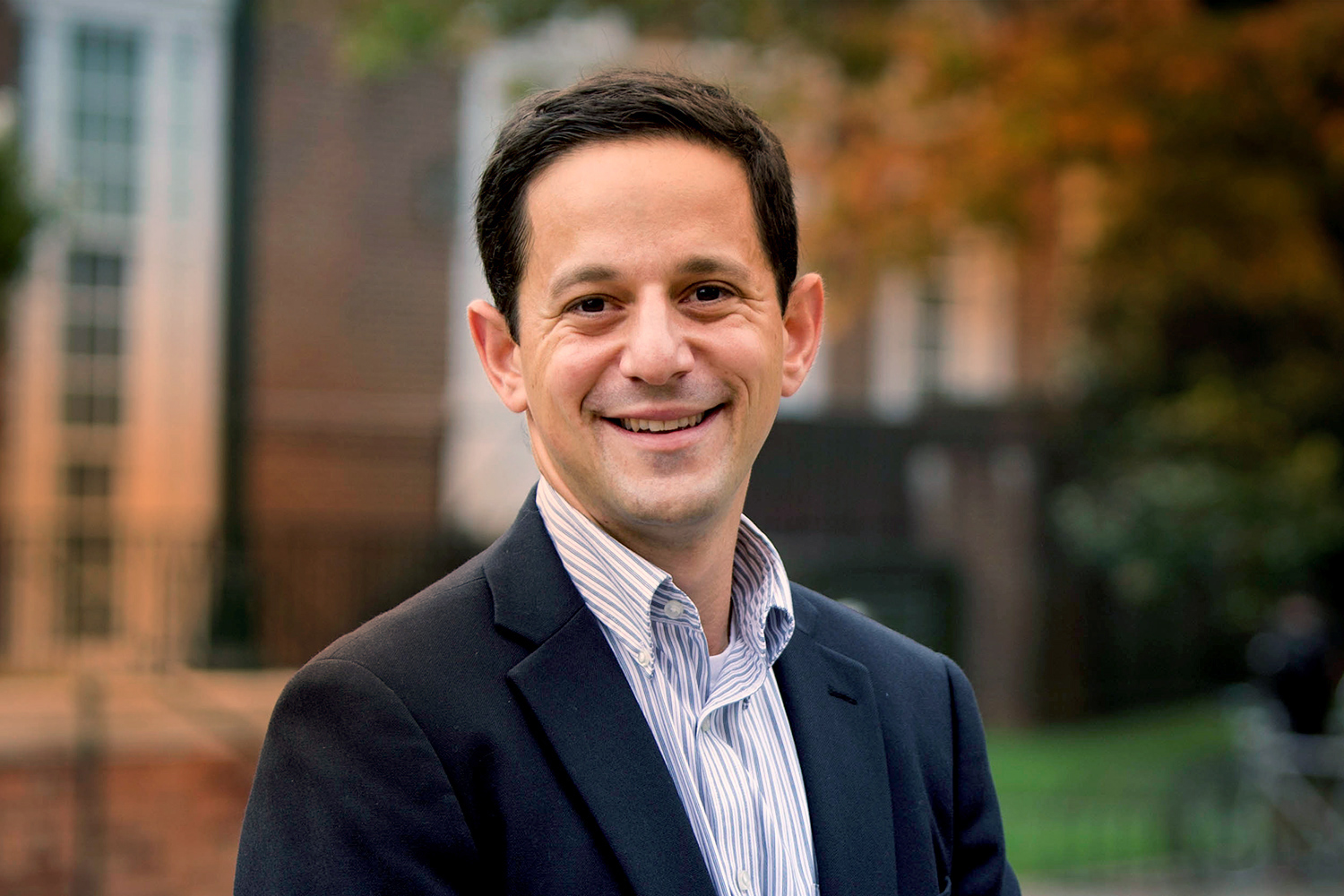Stacks of unopened mail pile up on kitchen tables. Hundreds of unread emails clutter inboxes.
“These are delivery challenges,” said Ben Castleman, an assistant professor of education and public policy in the University of Virginia Curry School of Education. “We continue to send very important communications through channels that aren’t reaching people.”
Castleman’s research at UVA is aiming to alleviate that problem, particularly in the realm of education.
“A lot of the work I do applies a combination of behavioral science insights, data science and interactive technologies to help students and families navigate complex decisions in education,” Castleman said.
Castleman referenced his research on the power of texting when it comes to helping college-bound high school seniors with the financial-aid process.
“Every year, there are hundreds of thousands of students who go to college who would be eligible for financial aid, but they don’t actually complete the application,” Castleman said. “Others don’t apply, and if they had, they might go to college as well.”
In that scenario, Castleman believes strategic improvements in the delivery and design of communication efforts can boost student outcomes.
Similarly, public school teachers, administrators, students and parents can also benefit from a conscious effort to more effectively communicate the less-complex, but equally important educational topics they are concerned with almost daily.
“We have to think both about how we deliver and design communication. Increasingly, even texting is getting more saturated as a channel. Instead of using words and phrases, we’re starting to embed well-designed images and infographics as a way of garnering and capturing attention,” Castleman said. “That’s my motivation for thinking more broadly than just financial aid about how schools can more effectively communicate with their populations.”
According to an article recently published by the Brookings Institution and written by Castleman and Jo Skillman – art director for The Black Sheep Agency LLC of Houston, which specializes in “non-traditional public relations, social media and experiential marketing” – incorporating private-sector marketing techniques into school communications systems could prove valuable.
“On the design side, we can be much simpler and straightforward by using a lot more media imagery, graphic design and white space,” Castleman said. “Whether the message is about free lunch, report cards or after-school program opportunities, we need to convey that information in ways that people are going to actually digest and take informed actions based on.”
Castleman, a former school administrator, said most school leaders are cognizant of the communication challenges they face and are receptive to learning how to implement these marketing strategies.
“On one hand, it seems like, ‘Of all the things we could focus on in education, why focus on better brochures?’” Castleman said. “But the reality is, from pre-K through college, students and families are making a series of complex and hard decisions. If we can more effectively communicate what’s available to them and support them to make decisions about the opportunities they pursue that best align with their own goals, that’s a pretty simple and cheap fix.”
Castleman said this concept is especially important when considering under-resourced schools and parents who may be under considerable financial stress.
“There’s some really important research that shows when a person is experiencing financial stress, their cognitive performance declines,” Castleman said. “That’s why it’s important to simplify information and convey it effectively so people in these situations can be just as informed.”
Time and financial resources are two factors of – and potential barriers to – implementation that Castleman has identified.
“Every school administrator will tell you we can’t just add more on to our teachers’ plates,” Castleman said. “But it’s important to note that there is an increasing number of firms that are trying to bring what traditionally had been private-sector marketing and communication strategies to nonprofits and schools in the public sector.”
According to Castleman, outside assistance could take different shapes. One option, he said, is to hire a firm to do the design work.
“By spending an upfront investment on more effective delivery and design, schools can help people make decisions more effectively,” he said.
A more cost-friendly option could include hiring a firm to lead a professional-development session for school employees.
“They could come and sit with department chairs and principals for a day, giving them templates and models for auditing their own communications,” Castleman said. “That way, they are building capacity. I don’t think this has to be an expensive venture at all.”
Additionally, Castleman said many universities are willing to partner with local schools on topics like this one.
“A rapidly growing number of academics are interested in the intersection of behavioral science and education,” he said. “That presents an opportunity for synergy, and that’s a logical connection that doesn’t have to cost the school much.”
For example, Katharine Meyer, a doctoral student in the Curry School, recently led a collaboration with Arlington public schools that focused on communicating with elementary school students about their summer reading.
“She and Arlington public school leaders had various trusted voices in the school – classroom teachers, gym teachers, custodians and lunch personnel – record short videos about what and why they read over the summer and encouraging kids to do the same,” Castleman said.
According to Castleman, improved communication strategies could result in less frustration for school administrators and teachers, and, more importantly, a lasting impact on the lives of students.
“It has the potential to lead people to better opportunities and better outcomes,” he said.
Media Contact
Article Information
September 30, 2016
/content/how-reach-people-better-delivery-and-design-education-news

